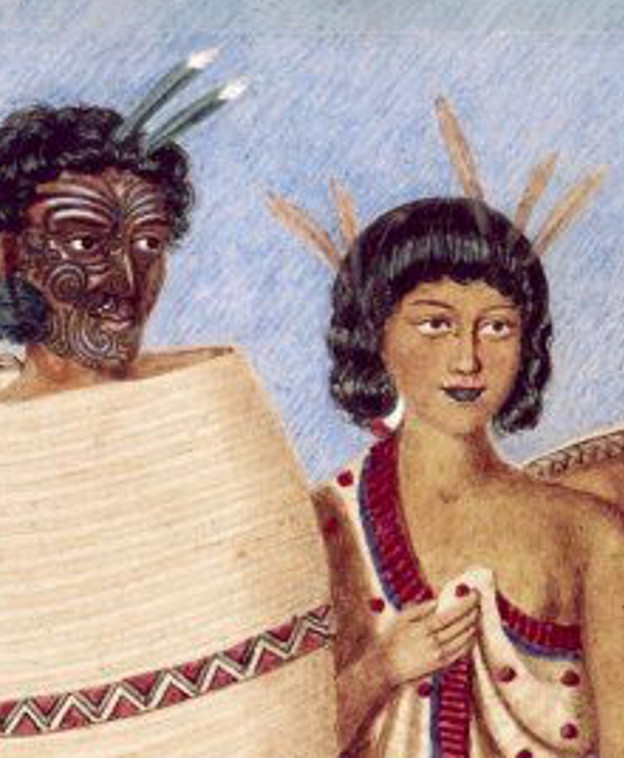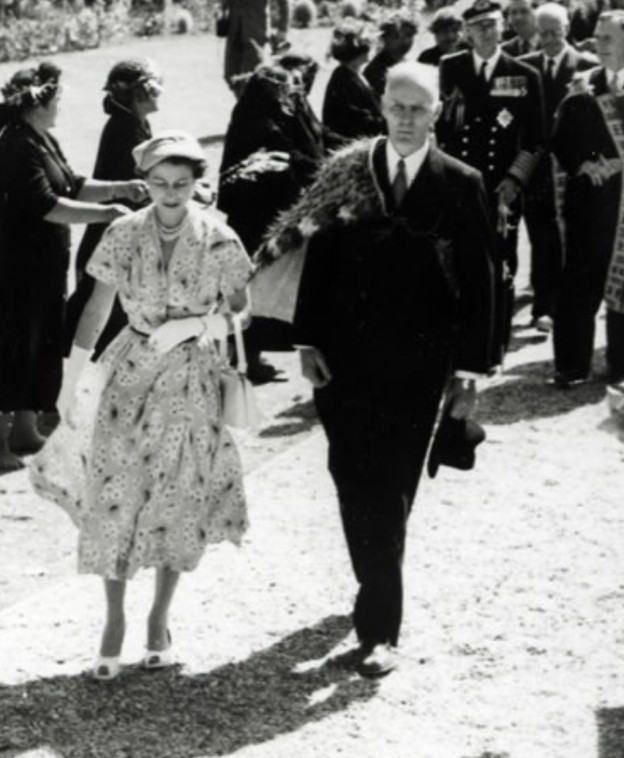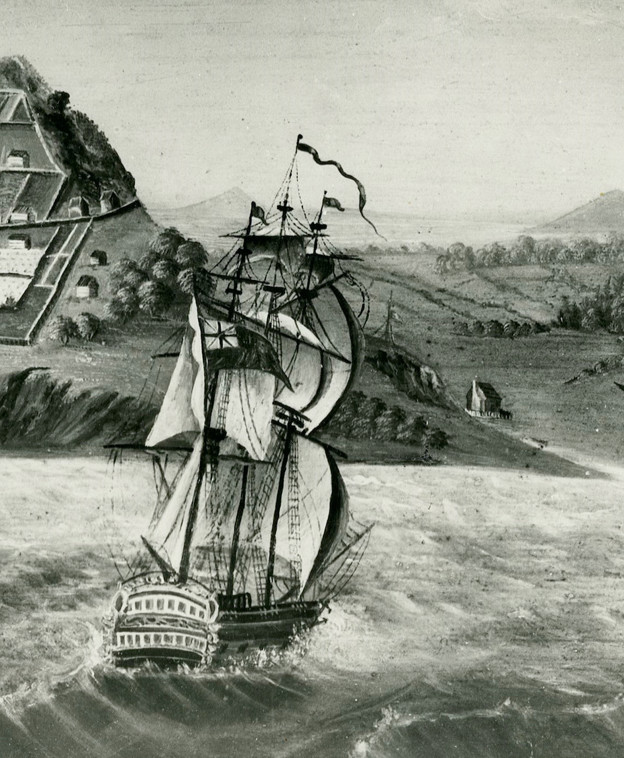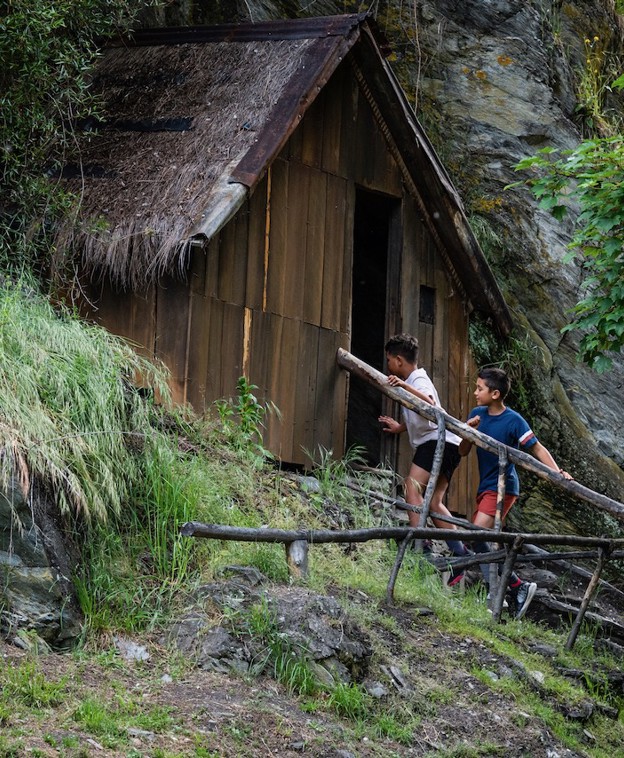Denniston - Life on the hill
A gathering 30 years ago of hundreds of former Denniston residents sparked the idea of Friends of the Hill, a community group that’s still actively connected to the coal-mining town – despite it being home to just a handful of people today
“This is called a banjo. Can anyone guess why?” Gary James rotates the shovel so that he’s holding it like a musical instrument. A look of recognition sweeps across the faces of the school kids standing opposite him and a couple of hands shoot up in the air. “Its wide blade meant that miners could shovel a lot of coal in a short amount of time. Who wants to have a go?”
We’re in the Friends of the Hill museum on Denniston Plateau, up a winding road half an hour north of Westport, standing at the entrance of a replica mine. Gary is hosting a school group on camp. It’s a tough crowd – a group of teenage boys – and the topic is history. But everyone’s listening. That’s because Gary has the best stories. In fact, he has all the stories. And he’s passionate about sharing them with people who want to find out more about the place that he’s loved for most of his life.
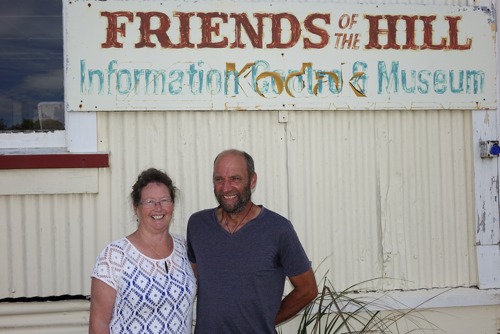
Sylvia and Gary James of Friends of the Hill. Image: Claudia Babirat
There are a few things a future visitor to Denniston should know. Firstly, yes, there’s a museum. You’ll find it if you continue past the turn-off to the steep railway incline for which Denniston is famous. If you like your heritage with a twist of authentic, in-the-flesh storytelling, you should visit. (“The museum is open on request, and every day between Boxing Day and Waitangi Day,” Gary is quick to add. “Entry is by donation.”) Secondly, Denniston may look like a ghost town, but it’s not. Many people who once lived here – and more recently their descendants – make the journey to Denniston regularly. Their connections to the once-bustling community remain strong by their being Friends of the Hill. Thirdly, six people still live in Denniston today.
One of them is Gary, another is his wife Sylvia. They live in a former miner’s cottage that they bought 35 years ago for $7000. “Denniston has always had a reputation for being an extreme and isolated place to live, and a lot of people think we’re crazy,” laughs Sylvia. But, she points out, it’s only a 30-minute drive to the closest shops. They have cell phone reception (“it’s a bit patchy”) and electricity. The only things missing are flush toilets. “The ground is too rocky to dig into.”
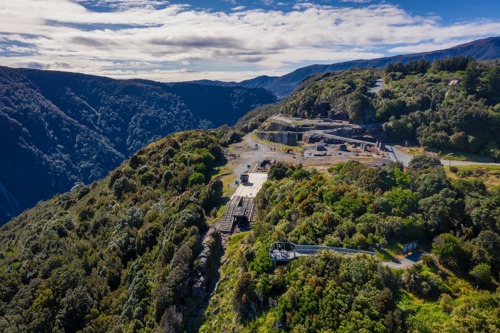
Denniston Incline building remains and retaining walls. Image: Jason Blair
There’s no lack of social life.
“We’ve met an incredible number of people who were born and raised here,” says Sylvia. “In its heyday, 1400 people called Denniston home: coal miners and their families. And for many of those who return, it’s like a homecoming.” Some try to find their old house sites or where they worked; others just want to share their stories with someone. For Gary, these are all precious encounters; he collects stories like some people collect stamps.
Born in Westport, he developed a deep personal connection with the area while out roaming the plateau and nearby hills as a youngster. He also has strong family connections to Denniston. “Growing up, we lived next to my great-grandmother, who used to tell me about her husband who was a travelling shoe salesman. He visited Denniston once a week – on the day when the miners were paid and had some money in their pockets.”
Sylvia lived in Denniston before she met Gary, following the lead of her great-grandmother, who resided on the hill for two years. “She moved here in 1898, a widow with a child in a mining town full of men. She came here to be a wet nurse for the mine manager’s wife.”
Over time, Gary and Sylvia have created an intricate web of connections between their own stories and those of the people they’ve met. As Gary says, “We’ve become the custodians of Denniston’s stories.” He prefers this title over their more official ones. “The idea of Friends of the Hill started in 1993 at a gathering in Christchurch of Denniston’s former residents. When we got there, we found that over 500 people had come!” The organisers, getting older, said the gatherings needed to come home or the events would stop. Gary and Sylvia got the ball rolling before leaving the reunion, and a few months later Friends of the Hill was born. Gary is the group’s chair and Sylvia acts as secretary.
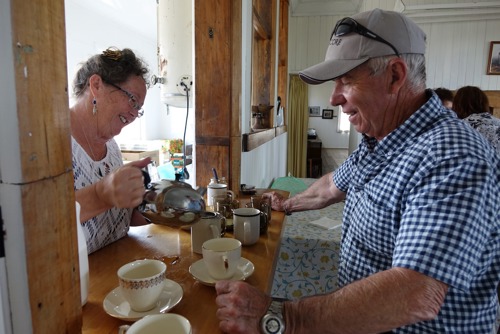
Sylvia James serves tea to welcome guests at the launch Denniston Mine as a Tohu Whenua. Image: Claudia Babirat
This is where the museum comes in. The Friends needed a base for reunions and a place where people could drop by. The best location, they decided, was the former high school. Betty Garing, a core member of Friends of the Hill, remembers going to school there. “It had one classroom, one cooking/science room, and one woodworking room,” says the 82-year- old, whose parents were raised, met and got married on the plateau. “Growing up, my family moved to Waimangaroa, at the base of the hill, when I was two. We moved back up the hill after my dad got a job as an official in the mine. If you were an official, you had to live at Denniston.”
Betty’s story is the kind that Gary loves. “It was a strong community with a lot of spirit,” continues Betty. “We had football teams, soccer, hockey, a picture theatre, a few shops, everything we needed. When I left school, I got a job in the mine’s office as a typist and later worked in payroll. I worked at an old mine manager’s house. I was in the big front room, which had a fireplace. It was always warm,” she laughs. “We had no shortage of coal.”
As the mine wound up, so did the community. “There was a gradual drift down the hill.” In 1961 Betty married Clem, a carpenter for the mines. They bought a house from Denniston (“originally built for the workers who put in the aerial ropeway”), dismantled it into three sections and moved it down the hill to Waimangaroa. She still lives there today, just down the road from her aunt and uncle, who are 96 and 98 years old respectively and the oldest active members of Friends of the Hill.
Dan Moloney remembers the school buildings equally well, but for a different reason. “We started creating the museum in 1994; it was all done by volunteers. The building in which we built the replica mine had been used as a machinery shop and there was grease all over the floor. It was a big job to clean it all up,” he says.
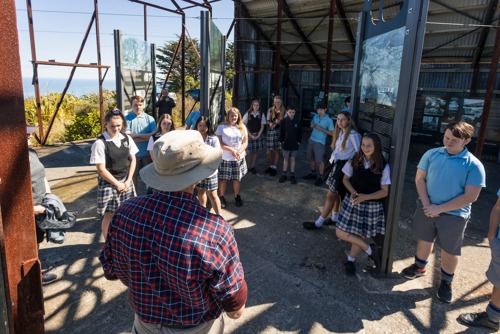
School groups can be hosted on-site to enable them to learn more about Denniston's history. Image: Jason Blair
Dan is a founding member of Friends of the Hill and, at 70, “probably one of the youngest”. Dan’s great-grandparents owned the Crown Hotel at Coalbrookdale, which his grandfather (also Dan) later ran for a short time.
What made Dan senior especially interesting was that between 1900 and 1905 he was seldom without his wooden tripod and camera; his collection is now at the Alexander Turnbull Library. “The photos are very special to me,” says Dan, “because I can still visit those places, although the hotel is no longer there.”
The Friends of the Hill museum now houses many treasures, including family heirlooms that “have come back on the hill”. Gary knows the story behind each one, such as the sewing machine that was used to make shrouds for the departed, whose coffins had to be transported down the hill for burial, and the home perm set that belonged to a widow whose husband had died in a mining accident. “There was no benefit for solo mothers,” Gary points out. “To survive she made money by doing the hair of the ladies who lived here.”
As well as welcoming the public, the museum hosts specialist interest groups and acts as a venue for events such as last year’s Matariki Festival. It was even used by the BBC during part of the Lost World series shoot. But its most important function continues to be as a hub for biennial Friends of the Hill reunions. “One of the biggest changes over the years has been the drop in numbers,” says Gary. “We started off with about 300 members, many of whom attended reunions. We’re down to about 80.”
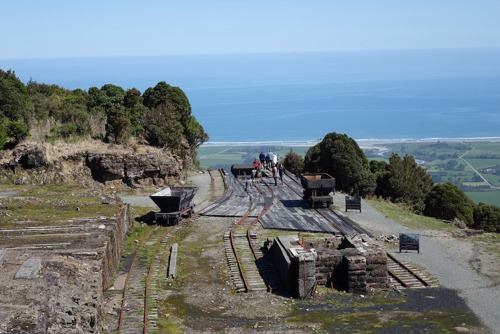
Restored wagons and Brakehead at Denniston. Image: Claudia Babirat
Now it’s mainly descendants who return to Denniston. Many come to scatter their parents’ ashes, and Gary and Sylvia regularly provide something they can take away with them. “They often want to know about where they’ve come from, so we invite them in for a cuppa. We’ve collected all their people’s stories over the years. We can fill in the pieces they’re missing.”
And once in a while Gary and Sylvia are surprised in return. “This year we finally heard from the Mottleys – the first family to live in our house,” says Gary. “We’re hoping to meet them soon. I’ve been waiting for this moment for 27 years.”
Not ones to want the final word, Gary and Sylvia point out that there are many active members of Friends of the Hill throughout the country, all equally enthusiastic about retaining and sharing their history. The local group, they say, keeps a small ember of mining life glowing on the hill.
Story by Claudia Babirat
